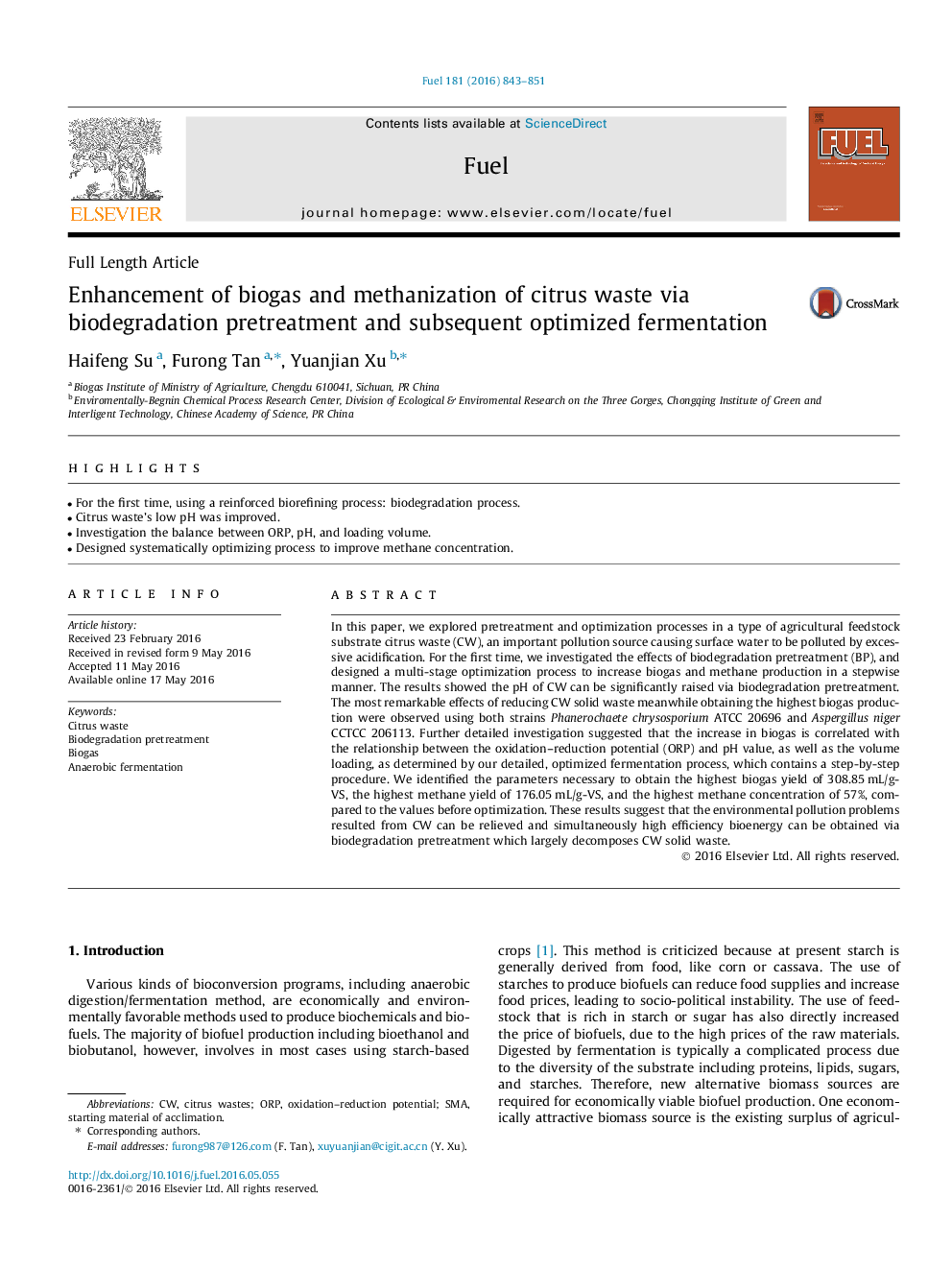| Article ID | Journal | Published Year | Pages | File Type |
|---|---|---|---|---|
| 204971 | Fuel | 2016 | 9 Pages |
•For the first time, using a reinforced biorefining process: biodegradation process.•Citrus waste’s low pH was improved.•Investigation the balance between ORP, pH, and loading volume.•Designed systematically optimizing process to improve methane concentration.
In this paper, we explored pretreatment and optimization processes in a type of agricultural feedstock substrate citrus waste (CW), an important pollution source causing surface water to be polluted by excessive acidification. For the first time, we investigated the effects of biodegradation pretreatment (BP), and designed a multi-stage optimization process to increase biogas and methane production in a stepwise manner. The results showed the pH of CW can be significantly raised via biodegradation pretreatment. The most remarkable effects of reducing CW solid waste meanwhile obtaining the highest biogas production were observed using both strains Phanerochaete chrysosporium ATCC 20696 and Aspergillus niger CCTCC 206113. Further detailed investigation suggested that the increase in biogas is correlated with the relationship between the oxidation–reduction potential (ORP) and pH value, as well as the volume loading, as determined by our detailed, optimized fermentation process, which contains a step-by-step procedure. We identified the parameters necessary to obtain the highest biogas yield of 308.85 mL/g-VS, the highest methane yield of 176.05 mL/g-VS, and the highest methane concentration of 57%, compared to the values before optimization. These results suggest that the environmental pollution problems resulted from CW can be relieved and simultaneously high efficiency bioenergy can be obtained via biodegradation pretreatment which largely decomposes CW solid waste.
